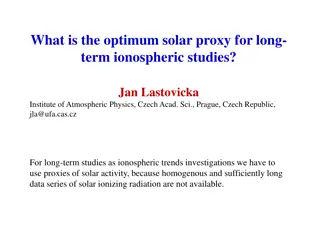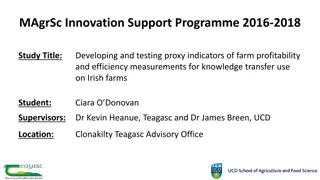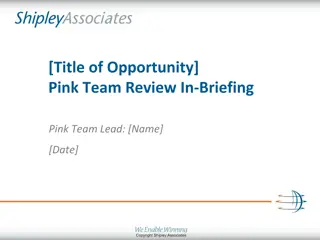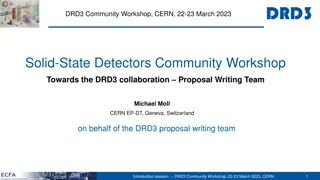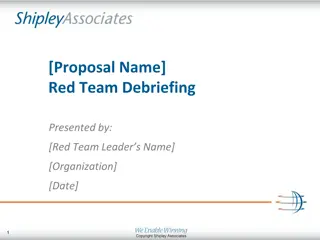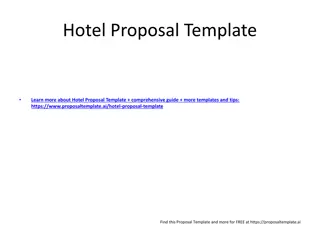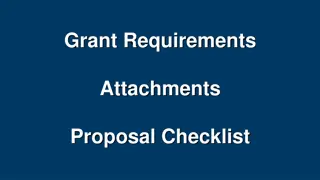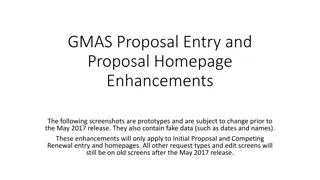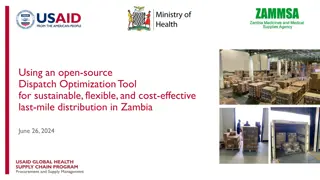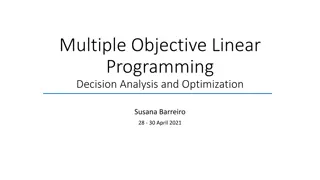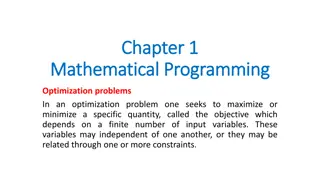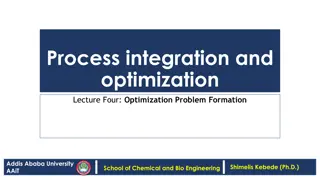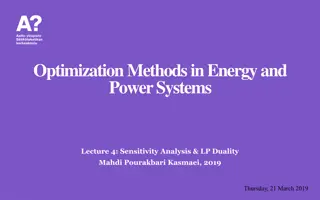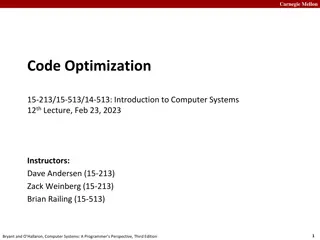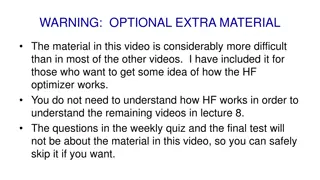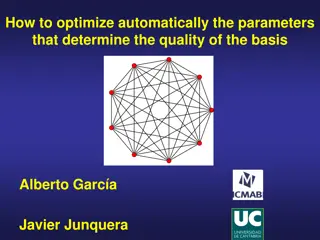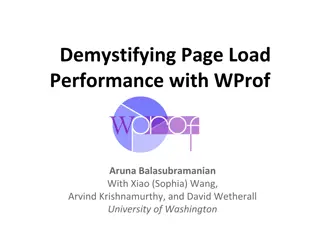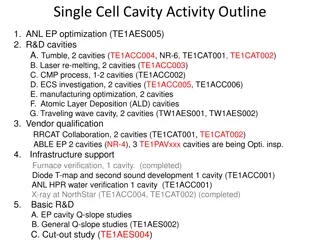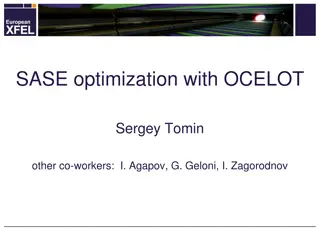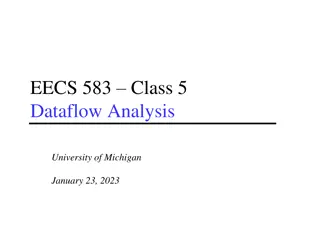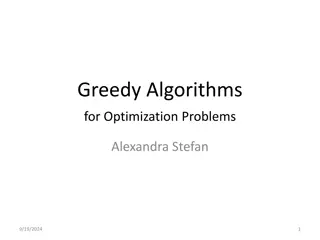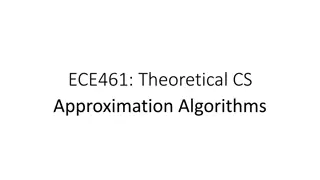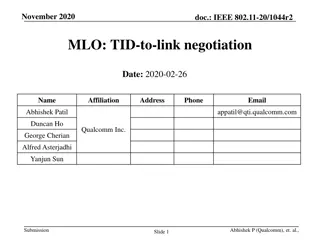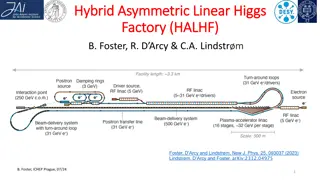Proposal for AS Proxy Offer Optimization
This proposal aims to optimize AS proxy offers for TCPA and LCRA to ensure fair market prices without distorting market competition. It includes strategies like Proxy AS Price Floor Proposals and the use of L Factor to determine proxy AS offer prices. The goal is to make AS capacity available to ERCOT while maintaining competitive market dynamics.
Download Presentation

Please find below an Image/Link to download the presentation.
The content on the website is provided AS IS for your information and personal use only. It may not be sold, licensed, or shared on other websites without obtaining consent from the author. Download presentation by click this link. If you encounter any issues during the download, it is possible that the publisher has removed the file from their server.
E N D
Presentation Transcript
Alternative Proposals for AS Proxy Offers TCPA & LCRA
Alternative Proposals for AS Proxy Offers I. Proxy AS Price Floor Proposals II. L Factor Proposal Goal: To allow AS capacity to be available to ERCOT without distorting market prices. A resource that is not actively participating in the AS market should not be assigned an offer that undercuts a competitive offer.
Proxy AS Price Floor Proposals
Proposed Floor Prices: 1. SWOC 2. Use DAM Clearing price for corresponding hour 3. Determine Cost differential between HSL and LSL (Average HR decreases at lower MW output) 4. Use the highest offer of the resource that submitted and cleared for that service in DAM as the proxy 5. Base on highest observed real-time AS offers just prior to SCED run to place at the back of the line 6. Evaluate and determine fixed values periodically based on observed historical AS offers (and/or other factors) 7. For LDRs: Proxy opportunity cost based on RTD Indicative LMPs
Determine Proxy AS Offer Prices 1. For each AS product, determine the max offered price for the Resource for the hour E.g. MaxRegUpPrice =MAX(RegUpPrice1, RegUpPrice2, RegUpPrice3, RegUpPrice4, RegUpPrice5) Similar logic for RRS, ECRS, ONNS, RegDn and OFFNS 2. For each AS product, determine the proxy AS Offer price for the Resource for the hour E.g. ProxyRegUpPrice=MAX(MaxRegUpPrice+K+LRegUp, FloorRegUpPrice+LRegUp) Similar logic for RRS, ECRS, ONNS, RegDn and OFFNS 3. If there is no AS offer for a specified AS product, the proxy AS offer price will be the default floor price for the AS product, modified if necessary by the dynamic L factor to ensure that the proxied AS offer price is greater than actual or proxied AS offers for lower quality AS. The default floor prices will be determined through the stakeholder process. 4. K is a configurable parameter (0 or very small positive number) to be added to the max offered price. This will allow the ability to make the proxy AS Offer slightly higher than the submitted AS offer. 6
Example 1: Online Upward AS Offers for All AS Products Example illustrates extension of On-Line upward AS Offers for a Resource with 100 MW HSL and only 20 MW of AS Offers submitted AS Offer MW RegUp Price ($/MW/h) RRS Price ($/MW/h) ECRS Price ($/MW/h) Non-Spin Price ($/MW/h) 20 15 10 5 1 100 15 + K + LRegUp 10 + K + LRRS 5 + K + LECRS 1 + K + LNSRS In this example, L for each AS would be $0 because AS offer prices already increase monotonically with AS quality 7
Example 2: Online Upward AS Offers for Some AS Products Example illustrates creation of proxy On-Line upward AS Offers for a Resource with 100 MW HSL and only 20 MW of offer for RegUp submitted AS Offer MW RegUp Price ($/MW/h) RRS Price ($/MW/h) ECRS Price ($/MW/h) Non-Spin Price ($/MW/h) 20 15 100 15 + K + LRegUp FloorRRSprice + LRRS FloorECRSprice + LECRS FloorONNSprice + LNSRS In this example, LRegUp would presumably be $0, unless one of the other AS floor prices were equal to $15 + K; LRRS and LECRS would be >$0, however, to ensure that the proxy offer for RRS is greater than the proxy offer for ECRS, which is in turn greater than the proxy offer for NSRS. LNSRS would presumably be $0 unless there was some lesser AS quality in the offer matrix behind it. 8
Example 3: Multi-Segment Online Upward AS Offers Example illustrates creation of proxy On-Line upward AS Offers for a Resource with 100 MW HSL and 3 segments submitted AS Offer MW (up to 5 per Resource) RegUp Price ($/MW/h) RRS Price ($/MW/h) ECRS Price ($/MW/h) On-Line Non-Spin Price ($/MW/h) 20 22 16 15 30 23 10 21 16 100 23 + K + LRegUp 16 + K + LRRS 16 + K + LECRS FloorONNSprice + LNSRS In this example, LRegUp would again presumably be $0; LRRS would be >$0, however, to ensure that the proxy offer for RRS is greater than the proxy offer for ECRS. LECRS would presumably be $0, unless FloorONNSprice = $16 + K. LNSRS would again presumably be $0 unless there was some lesser AS quality in the offer matrix behind it. 9
Example 4: No Online Upward AS Offers Example illustrates creation of proxy On-Line upward AS Offers for a Resource with 100 MW HSL and no AS Offers submitted AS Offer MW RegUp Price ($/MW/h) RRS Price ($/MW/h) ECRS Price ($/MW/h) Non-Spin Price ($/MW/h) 100 FloorRegUpprice + LRegUp FloorRRSprice + LRRS FloorECRSprice + LECRS FloorONNSprice + LNSRS In this example, LRegUp, LRRS, and LECRS would be >$0 to ensure that the proxy offer for RegUp is greater than the proxy offer for RRS, which in turn is greater than the proxy offer for ECRS, which again in turn is greater than the proxy offer for NSRS. RegUpproxy > RRSproxy > ECRSproxy > NSRSproxy LNSRS would again presumably be $0 unless there was some lesser AS quality in the offer matrix behind it. 10










